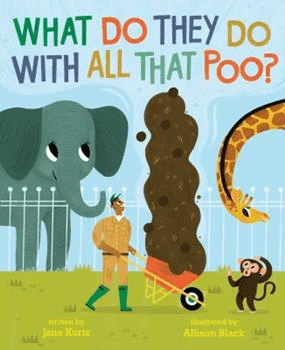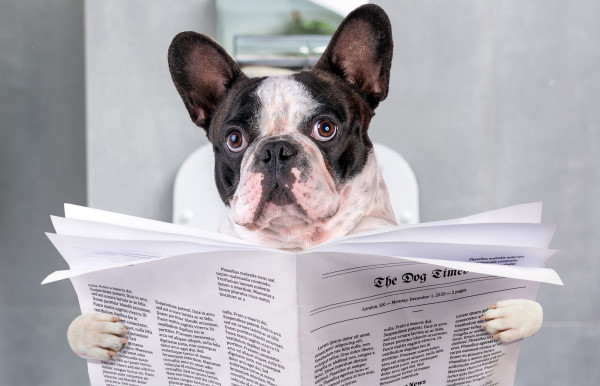What Do They Do with All that Poo?
Written by Jane Kurtz
Illustrated by Allison Black
Beach Lane Books | Simon & Schuster, 2018
Reading Level: Ages 3–8
40 pages.
ISBN: 978-1-481-47986-8
One reviewer writes, “Yes, this book is hilarious, yes it’s educational and even better it merges the line between toddler and older kid books by having two versions in one.” In this nonfiction picture book, rhyming text can be read as a stand-alone story. In addition, older students, educators, or parents can read the accompanying facts on each page that add background information on animals, their scat, and the management of poo in a zoo (or in many other places where animals and humans share space).
What Do They Do With All That Poo? has been used widely in classrooms and libraries to show science at work in our everyday world, to explore the nonfiction writing process, and to simply delight young readers. A librarian who used it as an all-school read writes, “I can’t express how much I enjoyed reading your book last week. Students that have barely participated all year, were completely engaged in this lesson. They LOVED it!”
Classroom Resources
Vocabulary: One reviewer (from Kirkus Reviews) called this book a “scatological success.” Question: What does being “a scatological success” mean?
Jane Kurtz talks about the idea that paper is sometimes made from the poop of elephants. Watch the video and discuss the following:
- Discuss why the fact that being vegetarian makes it feasible to use elephant poop to make paper. What does being a vegetarian mean?
- Where can one purchase paper made from elephant poop?

Another explanation of making paper from elephant dung (poop) is presented on the Poopoopaper.com site. Alternative Pulp & Paper Co., Ltd. (n.d.) From Poop to PooPoopaper™ – The Process.
Order a Elephant Poopoopaper Classroom Kit from Alternative Pulp & Paper Co., Ltd.
And on one page Kurtz speaks about the cube shaped poop excreted by wombats. That fact has intrigued readers as they wonder how does that happen – cube shaped? Now there is an answer. Helen Regan of CNN reports on a scientific report explaining how the cube shape comes about.
SOURCE: Regan, Helen. (2018 November 20) “Wombat poop: Scientists have finally discovered why it’s cubed.” CNN.
Read the latest research on wombat poo from ScienceAlert.

What Do they Do with All that Poo, read by Rachel who is the Mgr. of Sustainability for the Detroit Zoological Society.
Local Author Celebration Month: Storytime with Jane Kurtz
After listening to the story, learn how to make your own pooper scooper bags here.
Lisa, a lead zookeeper, teaches us what a zoo does with all the animal poo. Shown with permission from Metro Richmond Zoo.
Awards & Recognition
- Honor Book for the 2019 Maryland Blue Crab Young Reader Award in the beginning nonfiction category given by the Maryland Library Association
- Winner of the Oregon Council of Teachers of English Spirit Award for Nonfiction – 2018.
- Winner of the 2020 Magnolia Book Award—a choice award list for the children of Mississippi; sponsored by the Mississippi Children’s Museum.
-
Second place Kentucky Bluegrass Award k-2 sponsored by KASL
-
Virginia Readers’ Choice Award List
- Nominated for the 2019 Washington Library Association’s Towner Award for Informational text. (for grades 2-6).
- Named to Texas Library Associations 2X2 list (age 2 to grade 2) as one of 20 recommended books.
- AAAS/Subaru SB&F Prize for Excellence in Science Books Finalist
- An Amazon Best Book of the Month: Children’s Books (June 2018).
- Five Stars from BookWoman and the Kid Reader – Check it out: Hidden Treasures-Information in Picture Books

Reviews








